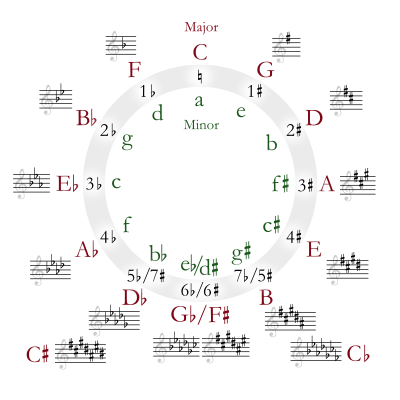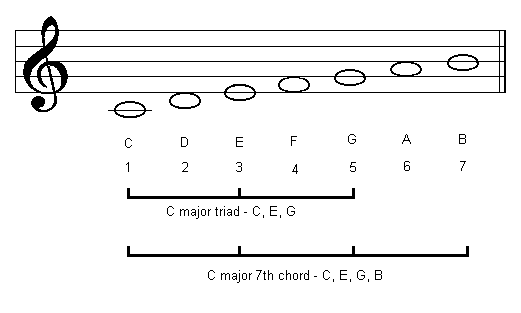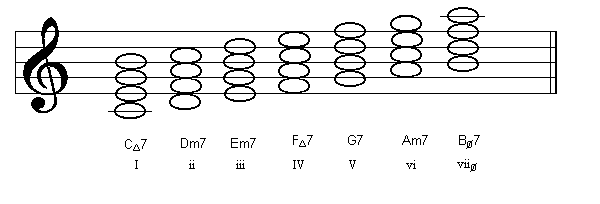The Circle of 5ths is a remarkable scheme for determining musical scales and is often expressed in a variety of ways. What does the Circle of 5ths tell us? A lot of things. Firstly, it shows us the chromatic scale lined up along the perimeter of the circle. The Circle of 5ths is divided vertically into a sharp side and a flat side. Going clockwise around the circle starting with C at the 12 o’clock position, we descend on the sharp side and encounter G which is a perfect 5th interval (7 half-steps) from C and every note encountered in sequence is a perfect 5th higher than the one before it. The Circle of 5ths can also descend from C at the top and go counter-clockwise down the flat side in perfect 4ths, which is the inverse of the perfect 5th.
While an experienced musician knows his or her scales and chords, the circle of 5ths is still a great mnemonic device. For you novices, though, to really internalize what the circle offers you about music theory, you have to be able to draw one from memory. I'm going to show you a method that requires virtually no memorization. First, let's look at a very basic one:

The pattern we encounter on either half of the Circle is B E A D G C. We encounter it descending on the flat side or ascending on the sharp side. You bass players with 6-string basses recognize this pattern immediately because a 6-string bass is tuned from top to bottom in exactly that pattern.
Use the above image for reference while following these steps:
1. Draw a clock face with 12 marks where the numbers would be. Since there are 12 marks evenly spaced along the perimeter and a circle has 360 degrees of arc, then each mark subtends 30 degrees of arc (12x30=360).
2. You can start at any mark but it is customary to place the key of C at the 12 o'clock position, so draw a C at 12 o'clock.
3. Now draw a line from the 12 o'clock mark across the circle to the 6 o'clock mark. What goes there? We don't know yet. But we can insert the notes flanking C at the 5 o’clock and 7 o’clock positions—B and D-flat respectively. Just go in sequential order--the lower note at lower number position. So place B at 5 and D-flat at 7. We don't we use C-sharp instead of D-flat? We can as you will see but we want to build a flatted side of the circle because it's easier. So buy it for now.
4. So we have three points marked--C at 12, B at 5 and D-flat at 7. Where to next. We can either go straight across the circle from B or from D-flat, makes no difference. So let's draw a line from the B at 5 o'clock to the opposite side of the Circle at 11 o’clock, we fill in the note flanking the lower side of B at the 10 o’clock position which is B-flat. The other note, C at 12 o’clock, is already filled in.
5. We just keep going around the circle this way until we fill in all twelve positions and we are done. How easy is that? Instead of memorizing all these notes in the order they go around the circle, we can just construct it empirically without bothering to memorize any of that. Do this several times until you get the hang of it and do it periodically whenever you're sitting around bored. Do it until it is automatic because the circle can't really help you much until you got it firmly in your head.
In the next post, we'll add in yet more detail to our circle.











 Linear Mode
Linear Mode
